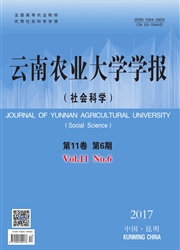

 中文摘要:
中文摘要:
微生物引起的皮肤溃烂是淞江鲈(Trachidermus fasciatus Heckel)常见的慢性感染性疾病,也是人工养殖过程中导致其产量下降的重要因素之一。现代微生物群落的主要研究方法不依赖于分离培养,而采用DNA高通量测序技术。高通量测序技术中为了提高测序效率、区分不同样本,引入了“标签序列”(barcode)。本研究探索Illumina MiSeq平台双向测定淞江鲈表皮菌群样本16S rRNA基因的V1~V3区序列的可行性,并且考察barcode长度和测序量对细菌群落结构分析的影响。结果表明:双向测序的拼接成功率达93%,可以成功识别V1~V3区。不同长度的barcode对序列分库有较大影响,建议采用12 bp以上长度的barcode。样本中有效序列的数目对可操作分类单元(OTU)的划分影响很大,在测试的有效序列数范围内,OTU数随有效序列数线性增加。当测序量达到6 000~9 000时属及以上分类数曲线逐渐进入平台期,可覆盖样本中的大部分种属。结合测序和文献结果,可推测黄杆菌属(Flavobacterium)、希瓦氏菌属(Shewanella)、假单胞菌属(Pseudomonas)可能与淞江鲈皮肤溃烂相关。
 英文摘要:
英文摘要:
A common chronic inflammatory infection occurred on the skin of roughskin sculpin-skin ulcer caused by microbe, is one of the main causes leading to the declined fish production in the aquaculture. The modern research method of microbial community is culture-free high-throughput sequencing. To improve the sequencing efficiency, barcode has been introduced to the high-throughput sequencing to distinguish the samples. In this study, we explored the feasibility of sequencing the 16S rRNA gene V1~V3 regions of cutaneous bacteria of roughskin sculpin dually with Illumina MiSeq platform. We studied the impacts of barcode length and sequencing on the classification of the bacteria. Results showed that the splicing of dual-sequencing is up to 93% and the V1~V3 regions can be recognized successfully. Length of barcode had a great influence on the sequences de-multiplexing, and we suggested that barcodes with no less than 12 bp are better for the sequencing. The number of valid sequences had a great influence on the OTU division, and the number of OTUs increased linearly along with the increase of the sequences. While the sequencing of sample reached 6 000~9 000, the classification curves in different levels entered the plateau gradually, illustrating that the data was large enough to cover most bacteria. Flavobacterium, Shewanella and Pseudomonas are probably related to the roughskin sculpin's skin ulcer by analyzing the results of sequencing and the reported references.
 同期刊论文项目
同期刊论文项目
 同项目期刊论文
同项目期刊论文
 期刊信息
期刊信息
